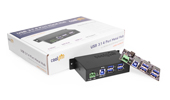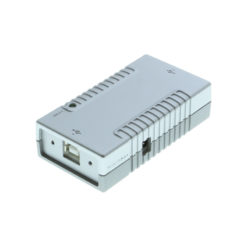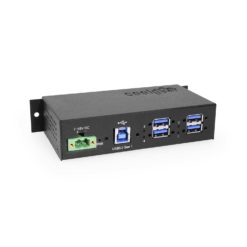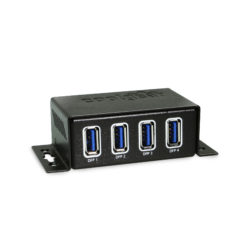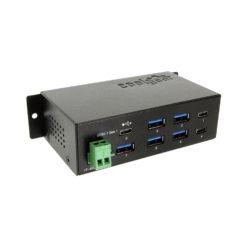What is Isolation?
Isolation is a means of preventing DC or uncontrolled transient currents from flowing between two communicating points. An isolator is an insulator across which signal and power transfer can occur.
Isolation breaks up electrical connections that can occur between two devices, such as a computer and your instrumentation. Isolation is also used for safety and preventing accidental currents from reaching ground through a person’s body. Isolation is typically rated by how high a low current AC voltage can be set before you arch across the isolation barrier.
Why Use Isolation?
Isolation is used as a means of protection when there’s the possibility of high voltage surges that may damage equipment or harm humans; to prevent disruptive ground loops and systems with interconnections where large ground potential differences or GPDs may be present; also to enable communication between low and high side component transitions, such as in motor drive systems.
Do I Need USB Isolation?
Isolating your USB device from the computer is dependent on the application. For most home users, isolating USB connections is not a concern, however for things such as data acquisition, IT, industrial/remote I/O or medical equipment, having USB isolation can be a necessity.
If you’re connecting industrial/remote equipment to a computer, you should evaluate the environment in which the device will be installed.
You should consider if the sensors will be subject to any of the following:
- ESD (Electrostatic Discharge)
- Lightning
- Power Surges
- Ground Loops
- Differing ground potentials
- EMI/RFI (Electromagnetic Interference/Radio Frequency Interface)
If the answer is yes, you will want to make sure your USB connection is isolated.
Isolation standards
What are isolation standards and certifications?
There are isolation standards for both component and product level certifications.
- Component-level testing is for integrated circuits.
- Product-level testing is for end-user products.
For isolation ICs, component standards are used to define terminology, essential ratings, characteristics, safety tests, and measurement methods for three component scopes: opto-isolators, digital, or non-opto isolators, and a combined standard for optocouplers and digital isolators.
These tests are performed at a device level, and are defined and designed to detect whether an isolator’s internal insulation could break down under varying operating conditions over time.”
Isolation standards for component level apply to the semi-conductor level. And equipment standards apply at the system level. EMC and emission standards apply at the semiconductor level.
Coolgear’s digital isolation products are tested to meet basic and reinforced isolation levels across most industry standards. Please contact one of our product specialists to find the right connection for your next project.







